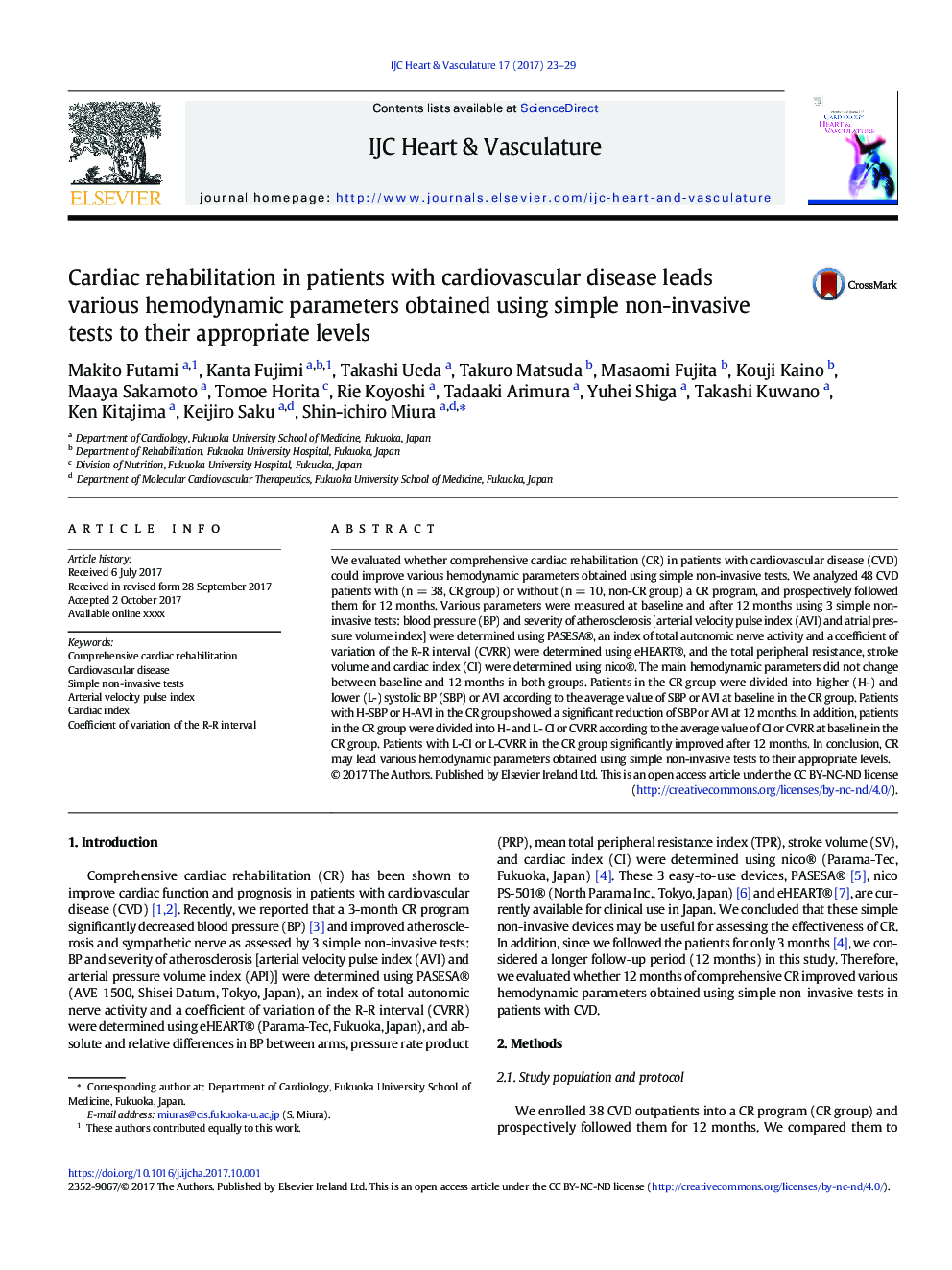| Article ID | Journal | Published Year | Pages | File Type |
|---|---|---|---|---|
| 5603635 | IJC Heart & Vasculature | 2017 | 7 Pages |
Abstract
We evaluated whether comprehensive cardiac rehabilitation (CR) in patients with cardiovascular disease (CVD) could improve various hemodynamic parameters obtained using simple non-invasive tests. We analyzed 48 CVD patients with (n = 38, CR group) or without (n = 10, non-CR group) a CR program, and prospectively followed them for 12 months. Various parameters were measured at baseline and after 12 months using 3 simple non-invasive tests: blood pressure (BP) and severity of atherosclerosis [arterial velocity pulse index (AVI) and atrial pressure volume index] were determined using PASESA®, an index of total autonomic nerve activity and a coefficient of variation of the R-R interval (CVRR) were determined using eHEART®, and the total peripheral resistance, stroke volume and cardiac index (CI) were determined using nico®. The main hemodynamic parameters did not change between baseline and 12 months in both groups. Patients in the CR group were divided into higher (H-) and lower (L-) systolic BP (SBP) or AVI according to the average value of SBP or AVI at baseline in the CR group. Patients with H-SBP or H-AVI in the CR group showed a significant reduction of SBP or AVI at 12 months. In addition, patients in the CR group were divided into H- and L- CI or CVRR according to the average value of CI or CVRR at baseline in the CR group. Patients with L-CI or L-CVRR in the CR group significantly improved after 12 months. In conclusion, CR may lead various hemodynamic parameters obtained using simple non-invasive tests to their appropriate levels.
Related Topics
Health Sciences
Medicine and Dentistry
Cardiology and Cardiovascular Medicine
Authors
Makito Futami, Kanta Fujimi, Takashi Ueda, Takuro Matsuda, Masaomi Fujita, Kouji Kaino, Maaya Sakamoto, Tomoe Horita, Rie Koyoshi, Tadaaki Arimura, Yuhei Shiga, Takashi Kuwano, Ken Kitajima, Keijiro Saku, Shin-ichiro Miura,
